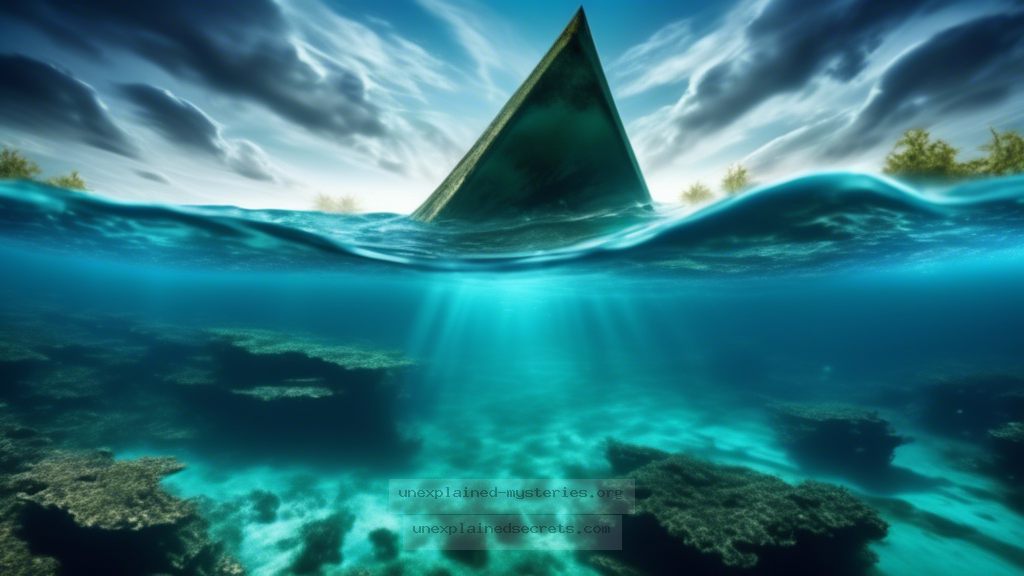What Secrets Lie Beneath the Waves of the Bermuda Triangle?
What Secrets Lie Beneath the Waves of the Bermuda Triangle?
The Bermuda Triangle, a region in the western part of the North Atlantic Ocean, has long captivated the imagination of researchers, adventurers, and the general public alike. Known for the mysterious disappearances of ships and aircraft, it poses intriguing questions about the nature of reality and the limits of our understanding. What secrets lie beneath the waves of the Bermuda Triangle? This post delves into documented cases, theoretical explanations, and the ongoing fascination surrounding this enigmatic area.
Historical Context: The Bermuda Triangle Phenomenon
The Bermuda Triangle spans approximately 500,000 square kilometers, bordered by Miami, Bermuda, and Puerto Rico. Its notoriety began in the mid-20th century, but the legends of this area date back to Christopher Columbus, who reported strange lights and erratic compass readings during his voyages. The term “Bermuda Triangle” was popularized in 1964 by writer Vincent Gaddis in his book “Invisible Horizons.” However, it was Charles Berlitz’s 1974 book that truly ignited public fascination, suggesting that the area was a hotspot for paranormal activity.
Since then, numerous incidents have been attributed to this region. One of the most notable cases is the disappearance of Flight 19, a group of five TBM Avenger torpedo bombers that vanished on December 5, 1945, during a training flight. Despite extensive search efforts, no wreckage was found. Adding to the mystery, a rescue plane sent to find them also disappeared. Such incidents have fueled speculation about the Triangle’s potential supernatural forces at play.
Core Concepts: Theories Behind the Disappearances
Various theories attempt to explain the enigmas of the Bermuda Triangle, ranging from the plausible to the outlandish. Here are some of the most discussed theories:
- Environmental Factors: The area is known for unpredictable weather patterns, including sudden storms and rogue waves that can reach heights of over 100 feet. Such conditions can easily lead to maritime disasters.
- Human Error: Many of the incidents can be attributed to navigational errors, especially in a region where compass readings can be affected by magnetic anomalies.
- Gas Hydrates: Researchers have suggested that large methane hydrate deposits under the ocean floor can release gas bubbles, reducing water density and causing ships to sink rapidly.
- Paranormal Theories: Some proponents of the supernatural propose that the area is a portal to another dimension or a site for alien activity.
Practical Implications: Understanding the Risks
Understanding the factors contributing to incidents in the Bermuda Triangle has real-world implications for maritime and aviation safety. The unpredictable weather patterns and potential for rogue waves highlight the importance of thorough navigational training and updated weather information. Moreover, the need for advanced technology, such as sonar and satellite tracking, can significantly reduce risks associated with travel in this region.
Key Safety Tips for Travelers:
- Always check weather forecasts before embarking on a journey.
- Ensure all navigational equipment is functioning properly.
- Remain informed about potential hazards in the area.
Real-World Examples: Documented Cases of Disappearance
Several cases of mysterious disappearances in the Bermuda Triangle have been documented. Here are a few notable incidents:
| Incident | Date | Details |
|---|---|---|
| Flight 19 | December 5, 1945 | Five bombers vanished during a training flight; a rescue plane sent to find them also disappeared. |
| USS Cyclops | March 4, 1918 | A navy cargo ship disappeared without a trace; over 300 men and passengers were lost. |
| Mary Celeste | December 5, 1872 | A merchant ship found adrift with no crew aboard; the cause remains a mystery. |
Alternative Perspectives: Skepticism and Rational Explanations
While the Bermuda Triangle is often associated with the supernatural, many researchers argue against the sensationalism surrounding it. Investigative studies suggest that the number of incidents in the Triangle is not significantly higher than in other heavily traveled regions of the ocean. The U.S. Board on Geographic Names does not recognize the Bermuda Triangle as a real geographic location, and many skeptics attribute the phenomena to human error or natural causes rather than mystical forces.
Moreover, studies indicate that many of the stories surrounding the Bermuda Triangle have been exaggerated or misreported over time. For instance, the number of ships and planes that have gone missing in the area is often inflated in popular media. One of the most comprehensive investigations, conducted by the History Channel, concluded that the Triangle is not as dangerous as commonly believed.
Common Misconceptions: Debunking Myths
Several myths and misconceptions persist about the Bermuda Triangle, often arising from sensational media portrayals. Here are a few common misconceptions:
- All disappearances are unexplainable: Many incidents can be attributed to natural phenomena or human error.
- The Bermuda Triangle is a unique danger zone: Similar incidents have occurred in other parts of the world, suggesting that the dangers of the ocean are not exclusive to this region.
- Supernatural explanations are the only answers: Rational explanations often provide a more grounded understanding of the phenomena.
Best Practices for Investigation and Study
For those intrigued by the Bermuda Triangle, a scientific approach to investigation is essential. Here are some best practices:
- Conduct Thorough Research: Investigate historical accounts and credible sources to gain a comprehensive understanding of the incidents.
- Utilize Technology: Employ modern technology, such as underwater drones and satellite imagery, to explore the ocean floor and gather data.
- Engage with Experts: Collaborate with maritime historians, oceanographers, and meteorologists to form a multidisciplinary approach to the mystery.
Future Developments: Ongoing Research and Exploration
Ongoing research into the Bermuda Triangle continues to yield insights into its mysteries. Advances in technology, such as improved underwater mapping and real-time weather monitoring, are being used to study the region more closely. Scientists are investigating the geology of the ocean floor and the impact of methane hydrates, while oceanographers are examining regional currents and weather patterns.
Moreover, the rise of citizen science projects allows enthusiasts to contribute to ongoing research, collecting data and sharing findings that could shed more light on the Bermuda Triangle’s enigmatic reputation.
Conclusion: The Allure of the Unknown
The Bermuda Triangle remains one of the most famous mysteries in the world, captivating the minds of many. While theories abound, it is crucial to approach the subject with a balanced perspective, distinguishing between sensationalism and credible explanations. Understanding the blend of environmental, human, and potential paranormal factors at play can help demystify this intriguing area. As research advancements continue, we may uncover more secrets beneath the waves of the Bermuda Triangle, reminding us that while some mysteries may never be fully solved, they continue to inspire curiosity and exploration.
Other Articles
Recent Posts
- What Happened to Flight MH370? The Conspiracy Theories That Still Haunt Us
- What Secrets Lurk Within the Walls of the Infamous Trans-Allegheny Lunatic Asylum?
- What Evidence Supports the Existence of Bigfoot in the Pacific Northwest?
- What Happened to the Indus Valley Civilization? Unraveling the Mysteries of Ancient Urban Life
- Can Telepathy Be Scientifically Proven Through Laboratory Evidence?







